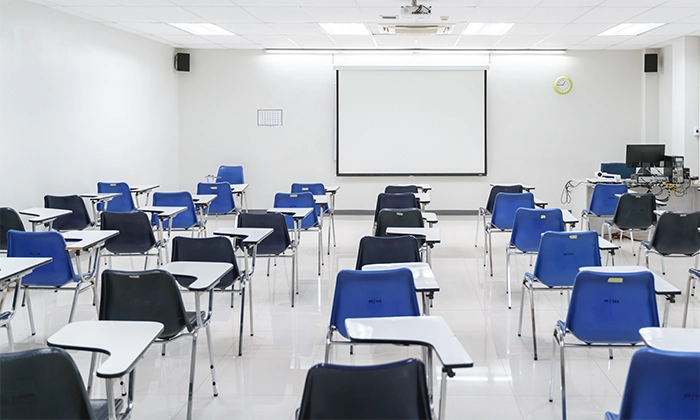Preparing for your new classes in your summer break

First thing’s first. The break is, of course, just that – a break. Treating it as such is undoubtedly important. All of the various clichés about recharging the batteries, mentally switching off, getting literal and figurative distance from the daily grind, have genuine merit and as such must be the first priority.
And yet the summer break is an invaluable time for preparation. It predates the reactionary demands that are unavoidably incurred during term time. It is also early enough to allow the previous year’s experiences to act as a dynamic resource. As a result, this unique sweet spot between terms becomes the ideal moment to prepare for the year to come.
Worth consideration, then, is how to figure out the best practices for using the break to ensure that, when the time comes to return to school, you’re well equipped to face whatever comes your way.
Review the year that’s passed
Whether you are a teacher, a student, or anything in between, the ability to critically evaluate your own effectiveness and make responsive adjustments is central to the whole notion of self-improvement.
Education and teaching is no exception. As Schussler, Stooksberry and Bercaw demonstrate by tracking the relationship between teachers’ disposition towards their teaching history and their effectiveness, self-reflection is inexorable to the best teaching practices:
“Candidates with the greatest capacity to unpack their assumptions and who therefore possessed the greatest awareness of their dispositions demonstrated (a) a propensity for questioning the how and why of their thinking and actions, (b) a balance between focusing on students and the self, and (c) an adoption of multiple perspectives.”
In other words, teacher and student outcomes are maximised when, as teachers, we’re critical of our practices, and seek to improve them year-to-year. Naturally, it’s crucial that the focus of this self-reflection is on our own practices and areas of improvement.
For example, it might feel vindicating to explain away some outcomes based on how unruly a given class was, but this will ultimately bear no constructive answers. Instead, critically evaluating your own response to this unruliness is much more likely to bear fruit for what approach to take should the same issue arise with incoming students.
Putting your own practices of the previous year under the microscope, seeing what worked and what did not, and making changes in response to use with next year’s classes is the first and most beneficial step to be undertaken in the gap between terms.
Professional development
Self-evaluation counts for little if it does not lead to action. In other words, it’s important to use the break from educating to undertake some education of your own. This may already be a requisite part of your back to school package via mandatory training for returning staff, but either way, individual professional development during the break is undoubtedly an avenue worth considering.
The modern world of education can seem at times to be quite a fast one. New resources and techniques are emerging all the time, plenty of which holds serious potential value, some of which may flatter to deceive. In the midst of term time, however, coming to terms with these new innovations alone can seem like too overwhelming a task, let alone figuring out which are the ones of value. Inevitably, a certain amount of new intelligence will end up passing you by.
The summer break reopens the door to this new material. Whether it be attending a workshop on how to implement a new learning philosophy, or completing online courses that bring you up to speed on utilising useful classroom technologies, the freedom of the break allows for the undertaking of professional development that can be carried confidently into a new class when term begins again.
Establish clear lines of communication
Clear lines of communication between students, parents and teachers are crucial to the classroom dynamic. To complicate things, the growth of ICT (information & communications technology) in schools has increased demands for clearer and more insightful lines of communication even further. Teachers are now expected to have comprehensive data packages relating to each student, as well as clear and concise explanations and insights to accompany them.
Ensuring that clear lines of communication are defined in advance of the new school year is a simple way of pre-empting a potential headache. This will involve researching and deciding upon the right kind of portal/platform for this dialogue, and setting it up for the new year. In short, the best platforms are those which provide a simple feedback loop, which can be presented to students and teachers at any point during the school year.
Ensure a strong start
The school year rolls around much like a rollercoaster, with periods of coasting through content frequently met with difficult slogs and exam blocks. One of the most effective ways to smooth the ride is to set a tone for the classroom that persists during the inevitable highs and lows of the school year.
The first few weeks of term are the perfect environment in which to set the tone for the remainder of the year. These weeks are those least likely to be interrupted and complicated by external factors. As teachers, there is more licence for setting the agenda of the year ahead, and the expectations for any given class. Planning every lesson is one thing, but thinking about and creating the desired impact of these first few weeks is another. After all, these first few classes are the ones that are most capable of being moulded in exactly the way that is desired.
Using the break to give yourself a break
Aside from enjoying some much-needed time off, devoting break time to self-reflection and planning the approach for the year ahead is crucial to a smooth school year both for students, and yourself.
Liked what you read? Check out more awesome articles:
Overcoming the challenges of an oversized classroom
References
Subscribe to our newsletter
Get the latest teaching and learning insights delivered to your inbox.
You can unsubscribe at any time, no hard feelings.
Subscribe to our newsletter
Get the latest teaching and learning insights delivered to your inbox.
You can unsubscribe at any time, no hard feelings.
What's Atomi?
Easy to understand, super engaging, and matching what you’re learning in class. Available for 100s of subjects across your high school years.
With heaps of questions and smart AI feedback that shows you what you’ve nailed and what to work on—so you won’t just feel ready, you’ll be ready.
Improve your study game, get AI-driven tips tailored to you, keep tabs on your progress and unlock insights so you can always hit your goals.
What's Atomi?
Captivating and impactful video-first content, fit for all types of learners and grounded in the absolute must-have info of the high school curriculum.
Active recall quizzes, topic tests and exam practice enable students to get immediate feedback and build skills, while allowing teachers to differentiate instruction.
Create engaging learning experiences with easy-to-use tasks, get actionable insights to differentiate instruction and experience intelligent personalisation for your students.
What's Atomi?
Short, curriculum-specific videos and interactive content that’s easy to understand and backed by the latest research.
Active recall quizzes and practice sessions enable students to build their skills, put knowledge into practice and get feedback.
Our AI understands each student's progress and makes intelligent recommendations based on their strengths and weaknesses.




